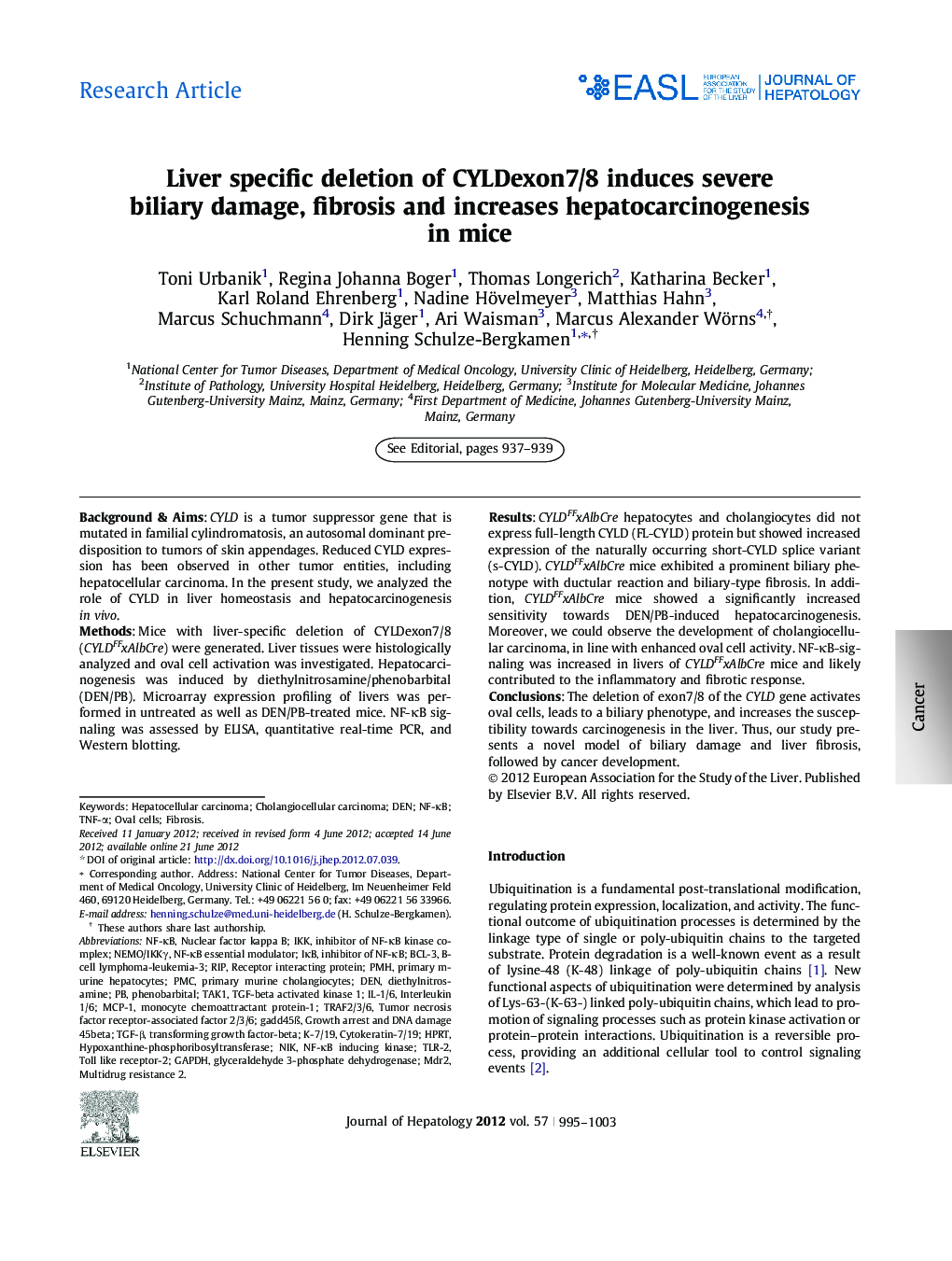| کد مقاله | کد نشریه | سال انتشار | مقاله انگلیسی | نسخه تمام متن |
|---|---|---|---|---|
| 6105790 | 1211153 | 2012 | 9 صفحه PDF | دانلود رایگان |

Background & AimsCYLD is a tumor suppressor gene that is mutated in familial cylindromatosis, an autosomal dominant predisposition to tumors of skin appendages. Reduced CYLD expression has been observed in other tumor entities, including hepatocellular carcinoma. In the present study, we analyzed the role of CYLD in liver homeostasis and hepatocarcinogenesis in vivo.MethodsMice with liver-specific deletion of CYLDexon7/8 (CYLDFFxAlbCre) were generated. Liver tissues were histologically analyzed and oval cell activation was investigated. Hepatocarcinogenesis was induced by diethylnitrosamine/phenobarbital (DEN/PB). Microarray expression profiling of livers was performed in untreated as well as DEN/PB-treated mice. NF-κB signaling was assessed by ELISA, quantitative real-time PCR, and Western blotting.ResultsCYLDFFxAlbCre hepatocytes and cholangiocytes did not express full-length CYLD (FL-CYLD) protein but showed increased expression of the naturally occurring short-CYLD splice variant (s-CYLD). CYLDFFxAlbCre mice exhibited a prominent biliary phenotype with ductular reaction and biliary-type fibrosis. In addition, CYLDFFxAlbCre mice showed a significantly increased sensitivity towards DEN/PB-induced hepatocarcinogenesis. Moreover, we could observe the development of cholangiocellular carcinoma, in line with enhanced oval cell activity. NF-κB-signaling was increased in livers of CYLDFFxAlbCre mice and likely contributed to the inflammatory and fibrotic response.ConclusionsThe deletion of exon7/8 of the CYLD gene activates oval cells, leads to a biliary phenotype, and increases the susceptibility towards carcinogenesis in the liver. Thus, our study presents a novel model of biliary damage and liver fibrosis, followed by cancer development.
Journal: Journal of Hepatology - Volume 57, Issue 5, November 2012, Pages 995-1003